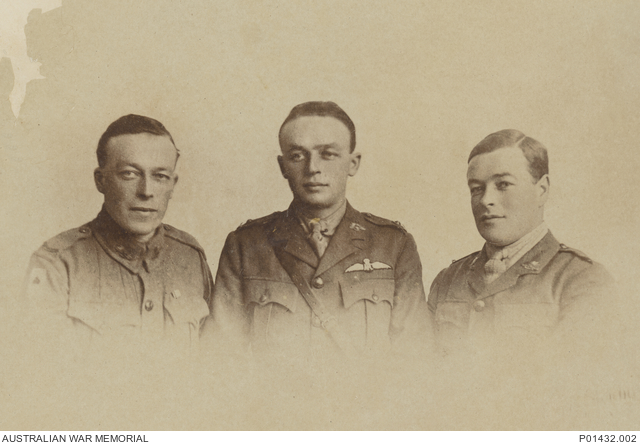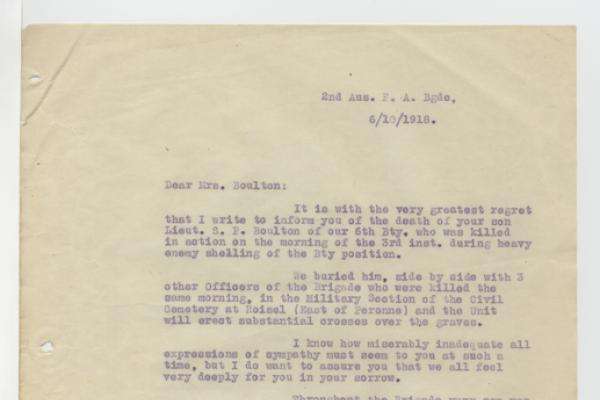The Cummings family
Raised in Franklin in south-eastern Tasmania, Mervyn Cummings was the eldest of three sons of Dr Harold Cummings and Marcia Jowell. Known affectionately as “Laddie”, 23-year-old Mervyn was working as a motor mechanic when the call to defend king and country rang out across the British Empire in 1914. Eager to volunteer, Mervyn and his younger brothers, Roy and Eric, joined the excited crowds queuing to enlist for the newly-formed Australian Imperial Force.
Mervyn’s mechanical expertise and experience led to his appointment as a driver, carting supplies and transporting wounded troops. His brothers saw action on Gallipoli, but it was not until Australian forces were re-deployed to the bloody battlefields of the Western Front in 1916 that Mervyn found himself on the front line.
In late September 1917, Mervyn, now a sergeant, was organising the evacuation of injured troops from Hooge, Belgium. Constant shelling and heavy rainfall had turned the Belgian village into a muddy quagmire, and the allies were struggling to push through the German defences. When Mervyn received word that an ambulance had been hit, he raced back through the traffic without hesitation to recover the wounded crew.
A few days later, Mervyn showed this same devotion to duty when he heard that an ammunition store had exploded. Although shells continued to burst overhead, he drove there immediately to retrieve survivors. For his bravery in the field, Mervyn was awarded the Military Medal.
Mervyn thought constantly of his brothers and wrote to them often. They all had a love of adventure and were fascinated by the aerial combat in the skies over the front. The youngest, Eric, was the first to transfer to the Australian Flying Corps. He was soon joined by Roy and Mervyn.
All three brothers proved to be exceptional flyers. Eric was decorated as an ace for his numerous aerial victories. Roy became a valued instructor training new recruits, but in late August 1918, he was accidentally killed when his aircraft was hit by a trainee pilot who had lost control. Mervyn was at his brother’s graveside for the funeral and remained until the final salute was fired.
When the war drew to a close, Mervyn and Eric returned home to Franklin. In 1920, Mervyn, who bore the injuries he had sustained while starting an aeroplane engine in Hobart, married his sweetheart, Beatrice. In spite of the dangers, Mervyn and Eric continued flying and went on to pursue careers in aviation.

